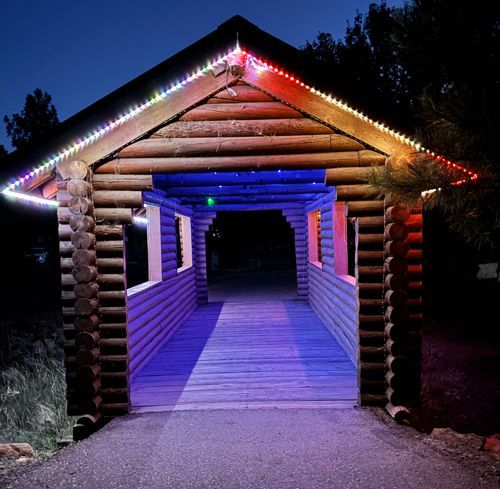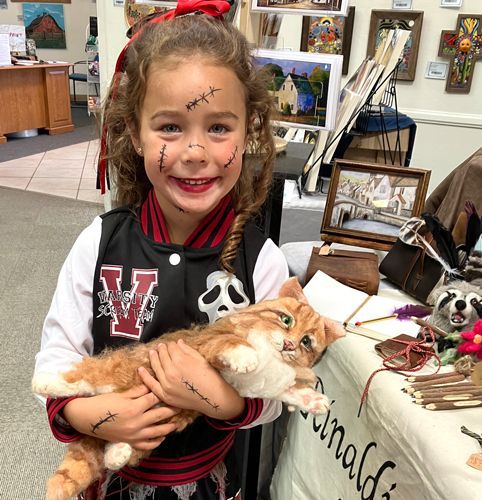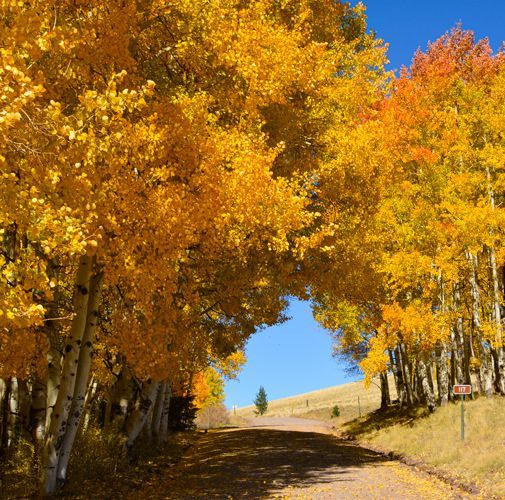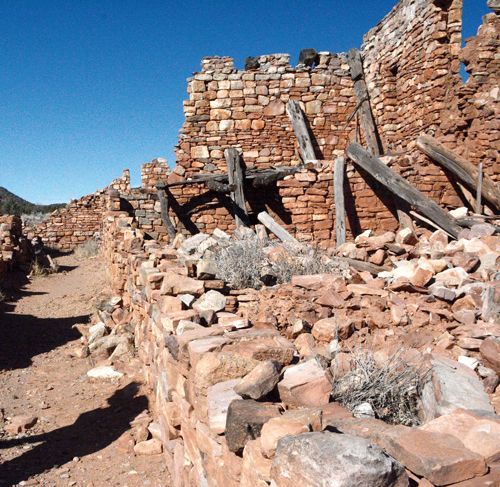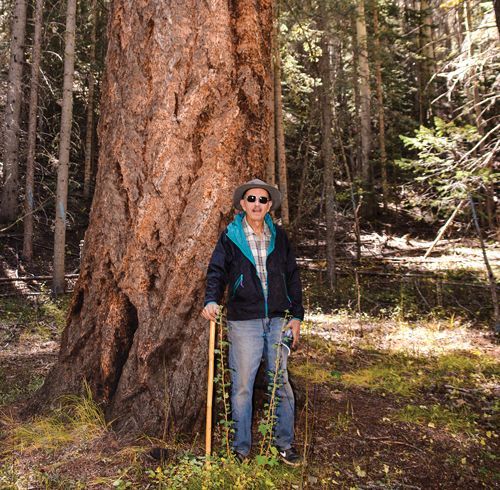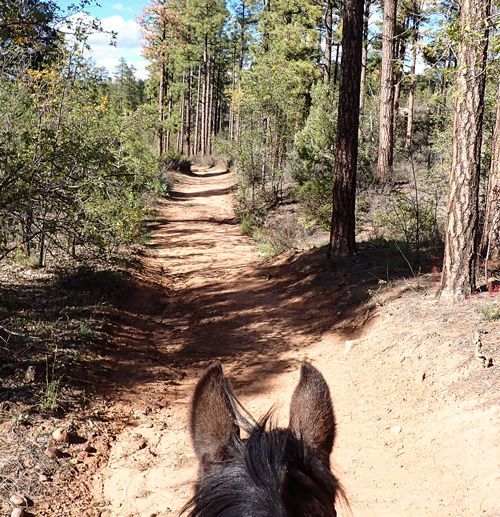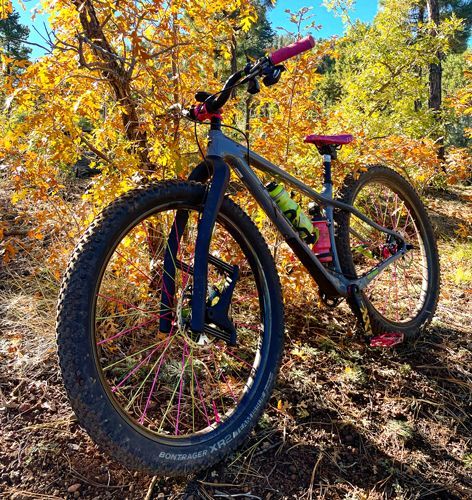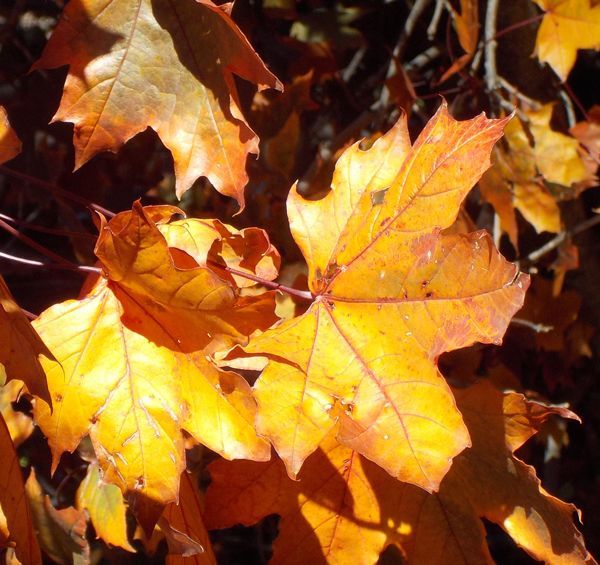"In A “World Of Wounds”
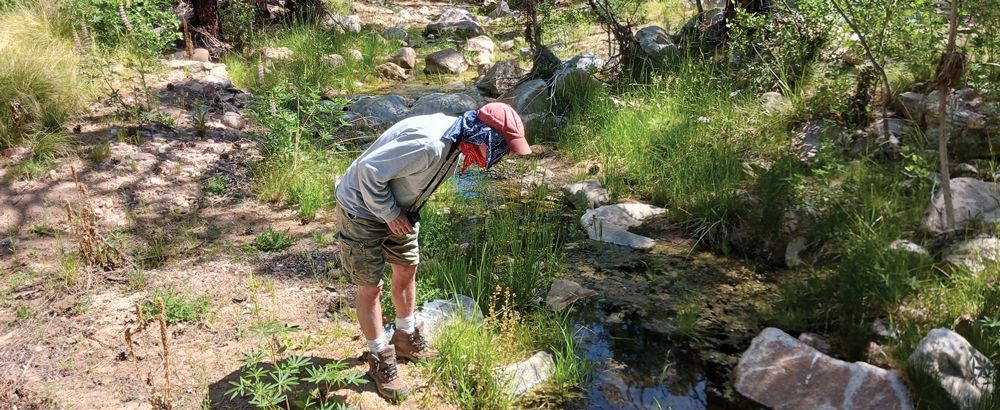
Article By Rob Bettaso
When I awoke, just slightly before first light, it took me a moment to orient myself. There were two features of my environment that told me I was no longer sleeping out-of-doors: 1) my feet were not cold, and 2) the cacophony of birdsong by numerous species had been replaced by the vocalizations of just two — a singing Black-headed Grosbeak and a squawking Steller’s Jay. It was then that I remembered I was back at home, in my own comfortable bed.
I was not at all sure that the exchange was a good one; as, while it was nice to be warm, it was a serious sacrifice to have lost the richness of the dawn choir that I had experienced while camping near a riparian corridor in the Prescott National Forest (PNF). My recent travels had centered on doing some intensive field biology with an organization known as the Arizona Field Ornithologists (AZFO). This was my second consecutive year assisting the AZFO and the first trip that allowed for three glorious nights of camping in an area I had never been to before. In fact, the PNF had generously allowed us the use of a former backcountry Ranger Station as the place for us to make our camp.
The AZFO comprises a mixture of diverse folks, including both current and retired agency biologists; serious birders from outside the natural resources profession; students and teachers; and general nature-lovers (often accompanying friends or family from one of the aforementioned categories). There is some minimal, formal structure to the AZFO, and this trip fell under the classification of scientific “field expeditions.” The trip leader and organizer was an expert birder by the name of Dara; whose knowledge of birds not only included species-identifying field marks and vocalizations but also bird taxonomy, behavior, and many aspects of avian ecology.
I wasn’t an actual dues-paying member of AZFO and my entrée into the group came from my good friend and long-time Arizona Game and Fish Department colleague, Lin, with whom I have done many day outings and camping trips over the past 25-30 years; all of which revolved around some aspect of nature-study. Lin had also recruited his brother-in-law (Ken) to join us and while Ken is not a birder, per se, he is an avid outdoorsman (the three of us have done many an elk hunt together) and a keen observer of the natural world.
Because the trip spanned four days, there was some coming and going of different participants into our team of birders; but both Lin and I were on-board for the duration of the effort and, I must say, I would have been very happy to have had the expedition run another several days as it was, quite simply, so much fun! In fact, the only aspect of the trip that was not thrilling to me was the roughly 10 hour round-trip drive to and from my home and the field site.
On the voyage to the camp, I took a northern route, which involved a lot of boring I-40 driving; but on the return trip, I meandered along state highways and through smaller towns along the Mogollon Rim. And while I had been in portions of the PNF (both for work and for non-work trips) in the past, I had not been to the specific portion of the Forest in which our field expedition occurred; namely, a chunk of public land west of the Williamson and Chino valleys and northwest of the Prescott and Verde valleys.
Our camp was situated approximately in the middle of our field survey sites — which included various habitats such as grass- and rangeland; pinyon-juniper scrub; higher elevation Ponderosa Pine country; and both sparsely and lushly vegetated riparian areas (though all the drainages had, at most, only small, intermittent pools of water). Our mission was straight-forward: hike and/or drive pre-determined routes and identify and count every bird we saw (and provide behavioral/ecological observations). By the end of our surveys, our final, collective tally was an impressive 109 different species of birds! Keep in mind that because the overall environment was so dry (normally dry; and now with the prolonged drought, especially so) that any wetland-dependent species of birds, such as the various waterfowl, were simply not anywhere near our survey sites. This made our bird species count even more gratifying; at least for me, since I’m quite satisfied with any outing that results in a tally above 30.
It is also worth noting that for about half of our field time; the wind was blowing with enough force as to make birding a challenge. How, you wonder, does the wind affect looking for birds? Well, there are at least three ways in which moderate to high winds can affect one’s ability to find and observe birds: 1) the sound of the wind makes it harder for birders to hear the vocalizations and the rustling of birds in their habitat; 2) the wind puts everything in motion (grasses, twigs and leaves, conifer needles and boughs, etc) so that our eyes struggle to pick up the motion of birds as they flit through the vegetation; and 3) birds are less active when it is windy because it takes more energy to fly in adverse weather (heavy snow, rain, or winds).
That said, modern birders have a few powerful tools at their disposal that were lacking when I started “bird-watching” — as it was known back in the early 1970s, when I first took up the hobby. Today, we have a wide range of optics (both binoculars and cameras) that, given the buying power of many Americans, are far superior to what most of us could afford a few decades ago. Additionally, there is this amazing and relatively new tool called “Merlin” (possibly named after both the Arthurian wizard and a species of falcon found in parts of the U.S.) which is a smartphone app that can identify bird vocalizations (calls and songs) with impressive accuracy. A final advantage I will mention is that on-line databases such as “e-Bird,” can help birders know which birds might be found in particular habitats and geographical areas at different times of the year — while simultaneously providing data pertaining to any given bird’s level of abundance. For that matter, a bird-watcher can even have their smartphone alert them to rare or freak sightings that are within easy driving range of their home or any specified location.
One of the primary reasons that the AZFO chose for us to camp and work in our pre-determined portion of the PNF was because there was (and still is) a significant bird occurrence “data gap” for the area. As such, our quick but intensive surveys tried to fill-in the blanks for what should prove fertile avian habitats. Over the course of our three days in the PNF, we divided ourselves into small teams and followed an intentionally flexible protocol as we birded our way through the countryside. Our days started around 4:30 a.m. and ended after 9:00 p.m. (with breaks in between). We tallied many passerines (the family of birds that includes the “song-birds”) but also did well with bird groups such as diurnal raptors; nocturnal families such as owls and nightjars; hummers; woodpeckers; and various types of “game birds” (turkey, quail, and doves).
And while our mobile/team surveys for birds were very productive and enjoyable to do, it was in the area right around camp that I experienced my most rewarding moments. It was in camp that I pondered how many different Yellow Warblers I could hear singing and calling when I awoke at first light. It was in camp that I watched as two rival male Bullock’s Orioles chased each other through the canopy of the walnut and cottonwood trees and once swooped alarmingly close to my head.
And lastly, it was in camp during the mid-days when we took our breaks from doing routes. I counted how many different flycatchers were perched within a half-mile radius of where my truck was parked. The seven flycatcher species that were in and around camp were a visually and vocally conspicuous presence. By the end of my time at our Ranger Station camp, I almost reached the point where I felt I was getting to personally know one Ash-throated Flycatcher who was invariably perched on the same scraggly oak tree each afternoon. As I walked toward that particular individual, I would pause to study the perky, medium-sized flycatcher. He was a fine specimen with his bushy brown head; distinctive white wing-bars; rusty tail-feathers; and soft, pale-yellow belly plumage. While I marveled at his subtle colors and alert demeanor, I thought that J.J. Audubon might not have had to resort to blasting and then posing the dead subjects of his magnificent paintings if he only had such cooperative birds as this one flycatcher who so patiently tolerated my nearby presence.
I also thought that long-gone Audubon essentially only killed a relatively small number of creatures during his lifetime. In contrast, in our more “civilized” times, all of us collectively have apparently changed an entire planet’s climate, and have put virtually all of Earth’s biodiversity in jeopardy. This sad notion reinforced my gratitude at having taken part in the bird blitz we had done within the PNF; but it also made me shrug my shoulders, and wonder what good our surveys would really do in the face of our seemingly dire global predicament.

